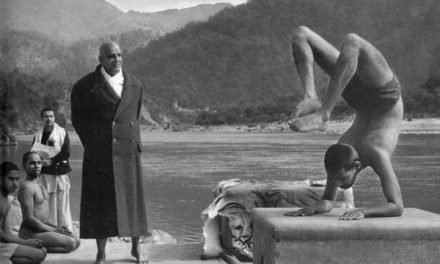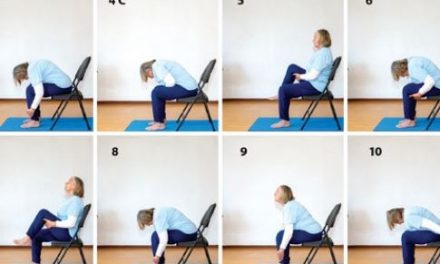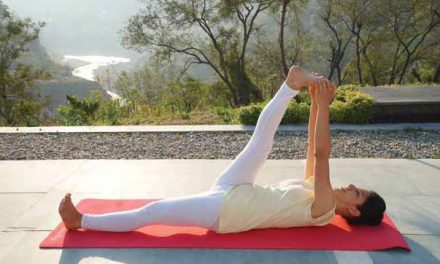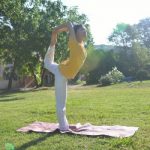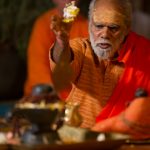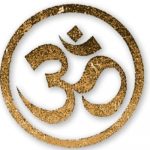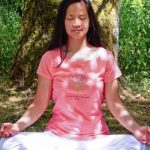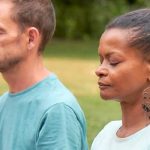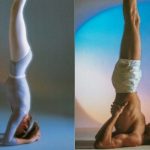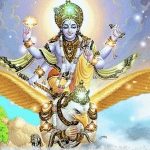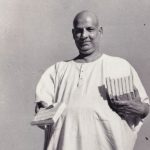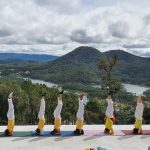 Mental Strength in the Asana Class
Mental Strength in the Asana Class
By Swami Sivadasananda
Mental fatigue is a common complaint of many people. Yoga promises relief, and it is surprising how much mental strength can be found in an hour spent on the asana mat. A closer look at some of the common features of an asana class reveals the astonishing potential of combining posture, breathing and relaxation for increased mental clarity and focus.
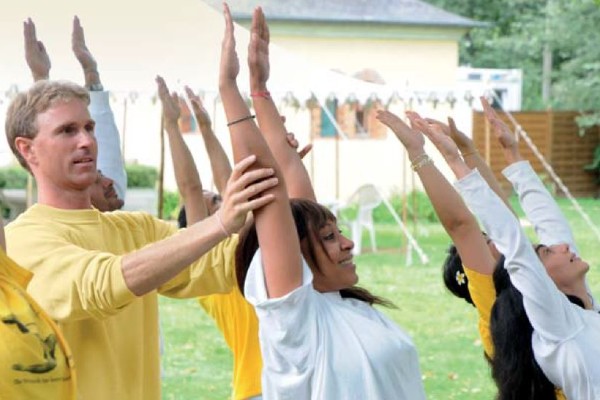 We live in a world of virtual space, from a narrow computer screen to special 3D-effects in movies. Adding to this the instant way we communicate through chats and email, our perception of time and space can become far removed from the natural world. As time and space are intimately related with the mind, mental clarity and mental strength decline if hearing and seeing is mostly related to a virtual reality.
We live in a world of virtual space, from a narrow computer screen to special 3D-effects in movies. Adding to this the instant way we communicate through chats and email, our perception of time and space can become far removed from the natural world. As time and space are intimately related with the mind, mental clarity and mental strength decline if hearing and seeing is mostly related to a virtual reality.
The yoga class marks a clear difference: proprioception or perceiving the body through the sense of touch from skin to muscle fibres and ligaments creates a very real connection to gravity. Whether we are practicing on the top floor of a high rise building or on a beach, gravity is always the same.
Slow and rhythmical breathing with the diaphragm stimulates the solar plexus. One function of the solar plexus is increased sensory perception of the abdomen. When applying this breath control while you move from the asana to the relax – ation pose (savasana) and on to the next asana, the perception of the body in harmony with gravity deepens and extends from the abdomen to the whole body. This grounding in gravity and space calms the mind which gets settled in a very real sense of “here”.
The solar plexus or celiac plexus is part of both the sympathetic and parasympathetic nervous systems. Thus the conscious flow of rhythmical abdominal breathing helps to balance sympathetic (“fight and flight”) and parasympathetic (“rest and rejuvenation”) impulses in the body. “Inhaling energy – exhaling fatigue” is a common visualisation during yogic exercises and corresponds to this connection of the solar plexus with the autonomic nervous system.
With practice, the inhalation becomes like a mirror image of the exhalation and vice versa. The smooth and balanced flow of air entering and leaving the body becomes the main reference of experiencing time, creating a very real sense of “now”.
Towards the end of the final relaxation, no more movement of the body is felt and all irregularities of the breath subside. Outer sights and sounds become irrelevant and the mind is centred in the experience of a very steady “here” (gravity) and “now” (breath).
‘Inhaling energy – exhaling fatigue’ is a common visualisation during yogic exercises and corresponds to the connection of the solar plexus with the autonomic nervous system.
The natural mental clarity and focus which you have gained during the class tends to continue for some time. Even if you have to make your way back home or back to work through loud and intense traffic, you may be surprised how little these conditions affect your mind. But as the hours go by, the mind finds less stability in the experience of time (hearing) and space (seeing), and mental clarity and focus tend to diminish.
On one hand the yoga class guarantees more mental strength and balance by tuning to gravity and to the breath, on the other hand it seems impossible to extend this equilibrium due to the unsteadiness of sight and sound in daily life.
You may ask yourself: “Is there no other way to stay clear and focussed?” – “Is Yoga making me too sensitive?” – “Maybe it is true what some people say: Yoga makes you turn away from the realities of the world?”
Nobody should worry about these questions. They simply show the limits of asana and pranayama and the necessity to strengthen our hearing and seeing through natural means. Besides a variety of inner concentration techniques, yoga also offers simple physical meditation techniques which focus on sight and sound.
Tratak
Sit cross-legged and place a lit candle at eye level in front of you. Breathe slowly and rhythmically, and gaze steadily for one minute at the brightest part of the flame without blinking. Then close your eyes for one minute and visualise the image of the flame in the space between your eyebrows. Practise tratak for up to ten minutes, alternating one minute periods with eyes open and closed.
OM Chanting
Sit cross-legged and pronounce the universal sound OM, by singing it on a medium pitch according to the natural flow of your exhalation. The humming M-sound should take about a third of each OM. If you close your eyes, you can feel the sound vibrating in your body moving up to the space between the eye brows. Once you have found a pleasant rhythm and feel the natural focus between the eyebrows, you can move on to mental repetition of OM for a few minutes. Keep the eyes closed and mentally pronounce OM with each inhalation and each exhalation.
An interesting observation during tratak and OM chanting is that through the power of concentration the mind can create its own sensory experience: the mind can visualise the candle flame with eyes closed, and it can mentally project the sound OM without the vocal cords. With practice, it becomes clear that it is not the sense organs which perceive, but rather the mind which perceives through the senses.
This empowers the mind to act as the true master of sense perception. Like a good charioteer can direct the five horses of a chariot to run or to stand still, so also the five senses can be projected towards their respective objects or withdrawn from them at will. The body is the chariot; the Self is its master; the intellect is the charioteer, the mind are the reins, the senses are the horses and the sense-objects are the various directions where the horses can run.
“As long as the mind restlessly wanders about amidst objects, ever fluctuating, excited, agitated and uncontrolled, the true joy of the Self cannot be realised and enjoyed. To control the restless mind and bring all thoughts and cravings to a stillness and sublimation is the greatest problem of man. If he has subjugated the mind, he may be said to be, in his subjective freedom and power, the Emperor of emperors.” – Swami Sivananda
Swami Sivadasananda Yoga Acharya and a senior student of Swami Vishnudevananda, teaches workshops throughout the Sivananda Centres in Europe and Teachers’ Training Courses worldwide. email: [email protected]

